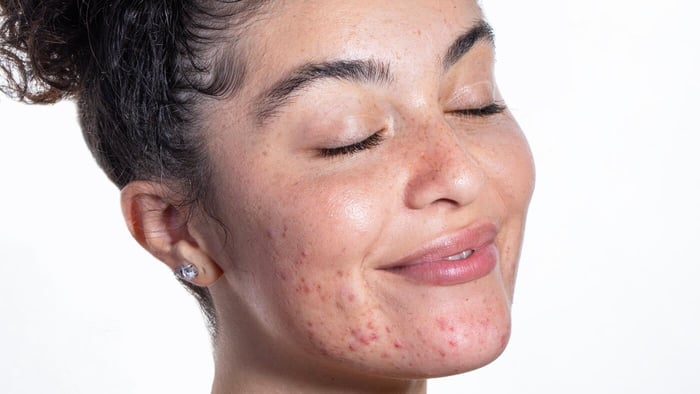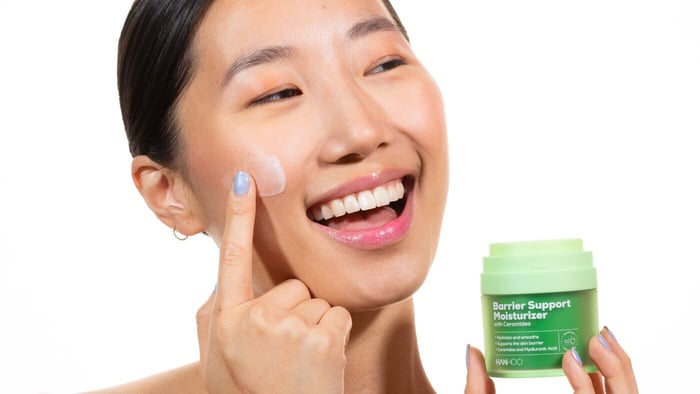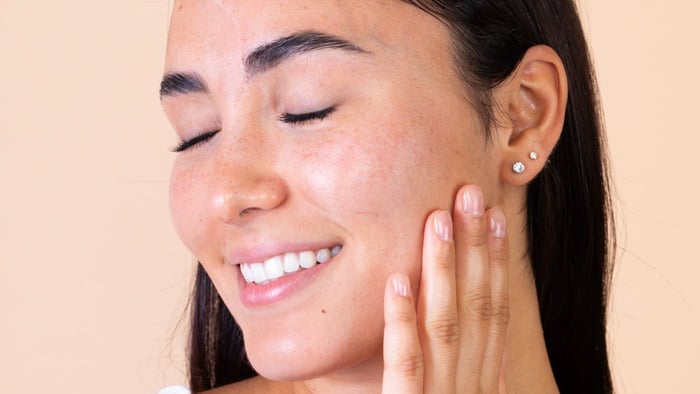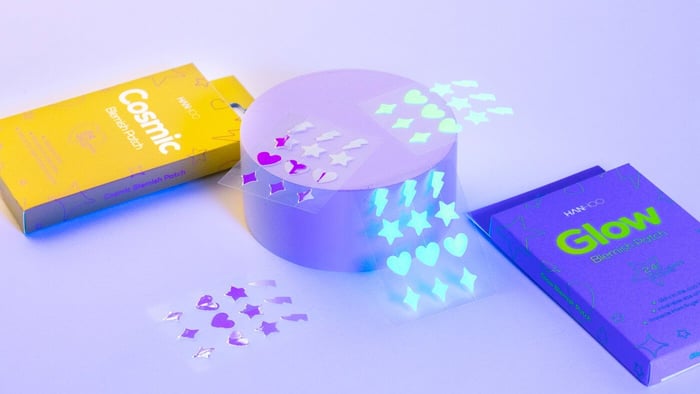Often after an active pimple has finally healed over, a post-blemish mark will be left behind on the skin. This can look like a dark spot on medium to dark skin tones (known as Post-Inflammatory Hyperpigmentation, or PIH) or a pink or red-ish spot on lighter skin tones (known as Post-Inflammatory Erythema, or PIE).
How does PIH and PIE happen?
We often recommend not popping your pimples for a number of reasons, one being that they can cause PIH and PIE spots. When you pick and pick at a pimple, you are likely causing more inflammation and irritation to the spot.
Think about the last time you scraped up your knee, leading to the formation of a scab. You likely noticed that once the scab was gone that the skin underneath that scab is either dark in color or red (depending on your skin tone). That’s a bit similar to picking at a pimple. If you pick at it and leave an open wound, then the pimple will lightly scab over and leave behind a discolored spot.
Unfortunately even if you don’t pick at or pop pimples, these types of post-blemish marks can still appear after a pimple is gone. This is because inflammatory acne can lead to the formation of PIH or PIE spots. Inflammation can cause an over-production of melanin which leads to the appearance of dark spots. Or, for those with lighter skin tones, inflammation leads to damaged blood vessels which result in pink/red spots.
How do you treat post-blemish marks?
If your type of acne typically causes PIH or PIE marks, then one way to treat these post-blemish marks is by preventing the acne that causes them in the first place.
You can do this by following an acne-prevention routine, like this:
🫧Step 1: Cleanser
If you regularly deal with acne, then your skin can really benefit from a gently exfoliating cleanser that includes ingredients like BHA or AHA. One such popular exfoliating ingredient is Salicylic Acid, which helps prevent acne by flushing out acne-causing factors from the skin. This includes elements like excess sebum and dead skin cells.
🧴Step 2: Acne Treatment
There are tons of different kinds of acne treatments that you can incorporate in your routine to help prevent acne breakouts. This includes liquid exfoliants, retinoids, serums, or creams, with active ingredients like Salicylic Acid, Adapalene, or AHAs. The product you use really depends on your skin type and what your skin can tolerate, especially since acne treatments can sometimes be harsh on your skin if you’re not careful.
💧Step 3: Moisturizer & SPF
Whether you have a combo moisturizer and sunscreen in one or not, your skin needs both. And if you are in the camp that thinks moisturizer is too heavy for your acne-prone skin, then rest assured there are plenty of moisturizers that are light and still nourishing. Sunscreen is also necessary regardless if you deal with acne or not. If you deal with post-blemish marks often, sunscreen helps protect the spots from darkening further.
What to do if you are already dealing with post-blemish marks
If you have acne-prone skin then you know how hard it is to completely prevent breakouts. Even with the best acne routine, you can still break out, which will sometimes result in post-blemish marks.
There are plenty of skincare ingredients you can turn to if you’re dealing with post-blemish marks.
Lots of ingredients target dark spots by reducing or inhibiting melanin production that would worsen the look of dark spots. Such ingredients include: Vitamin C, Niacinamide, Alpha Arbutin, and Licorice Root Extract, among many others.
And while most of these ingredients directly target melanin production (meaning that they work best on dark spots), some of them also work well to fade the look of PIE marks. For example, Niacinamide is known to help improve the look of dark spots but it also helps lessen the appearance of redness on the skin, such as post-blemish marks that are pink or red in color.
With this in mind, we included Niacinamide as the star ingredient of some of our favorite Hanhoo products including the Dark Spot Brightening Patch and Post-Blemish Corrector.
Our Dark Spot Brightening Patch is a microneedle patch infused with 2% Niacinamide and Hyaluronic Acid to help fade the look of post-blemish marks. The dissolving microneedles help reach the spot directly to better fade the problem spot. We recommend using the Dark Spot Brightening Patch 3 to 4 times a week for 2 consecutive weeks to see best results.
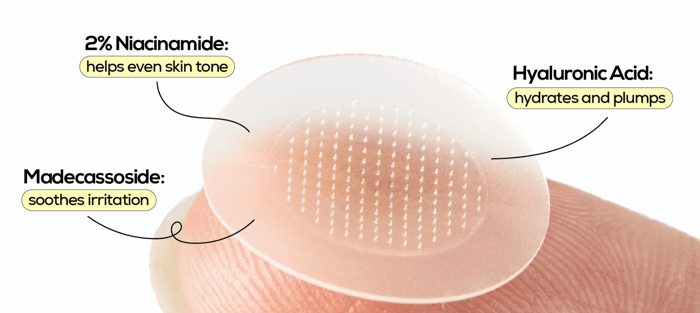
Our Post-Blemish Corrector on the other hand is a great option to wear under makeup and you can use it up to twice daily. The gentle spot corrector is made with 3% Niacinamide and 2% Tranexamic Acid to tackle dark spots and red/pink spots. The lightweight, quick drying gel texture makes it super easy to apply under makeup.
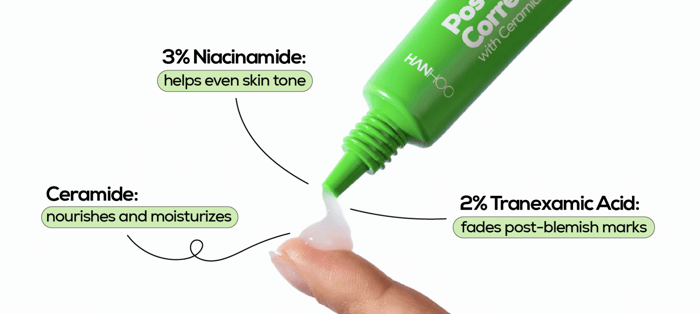
Lastly…
Everyone’s skin is different, and the way post-blemish marks pop up also depends on your skin’s characteristics. For example, you might not always get post-blemish marks and if you do they are not very severe and can be easily treated with topicals. But, if you deal with severe acne and get equally severe post-blemish marks, then it’s best to seek treatment with the help of a dermatologist.












